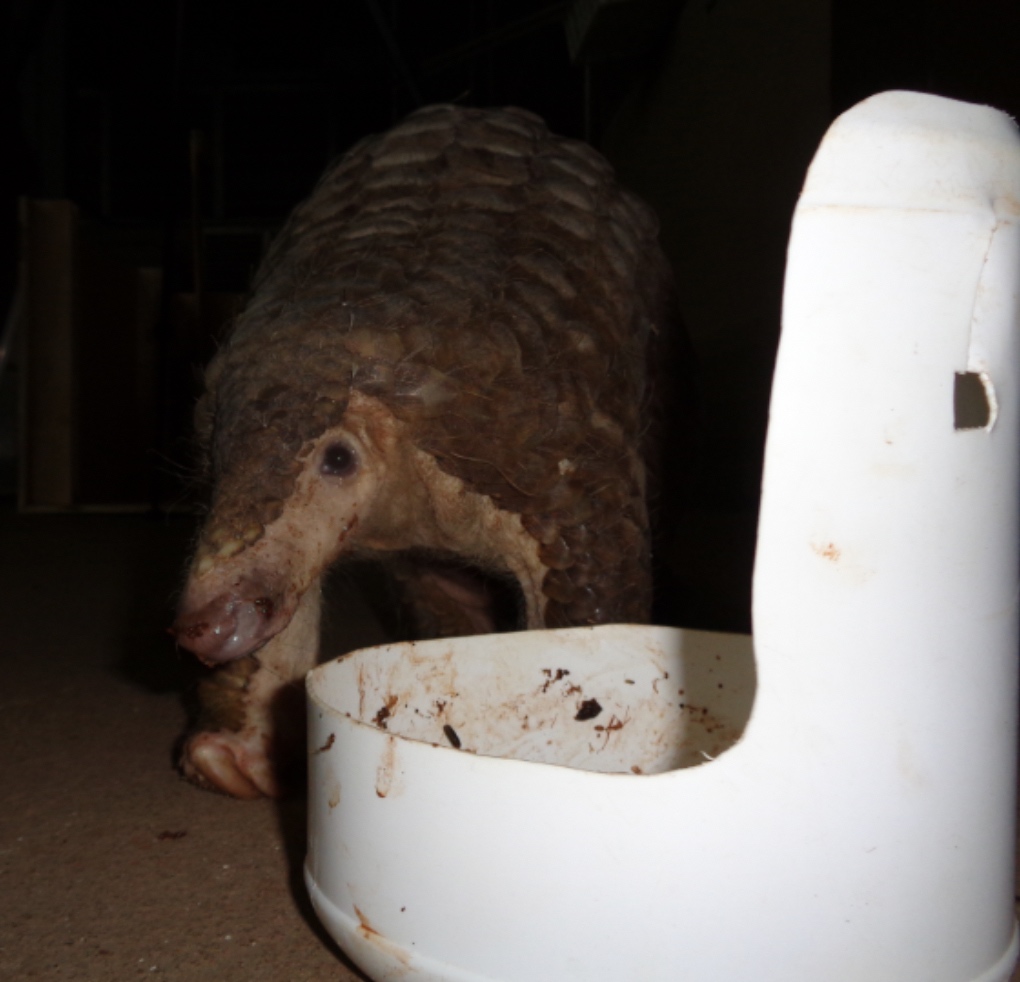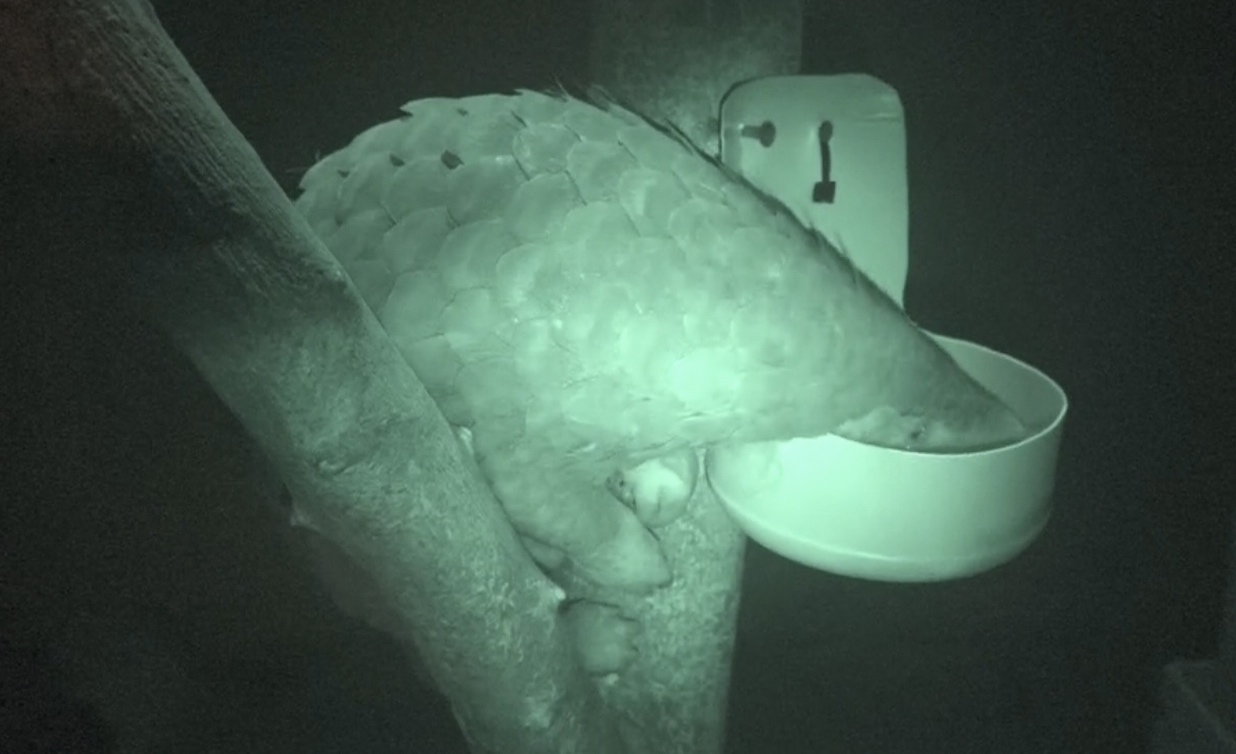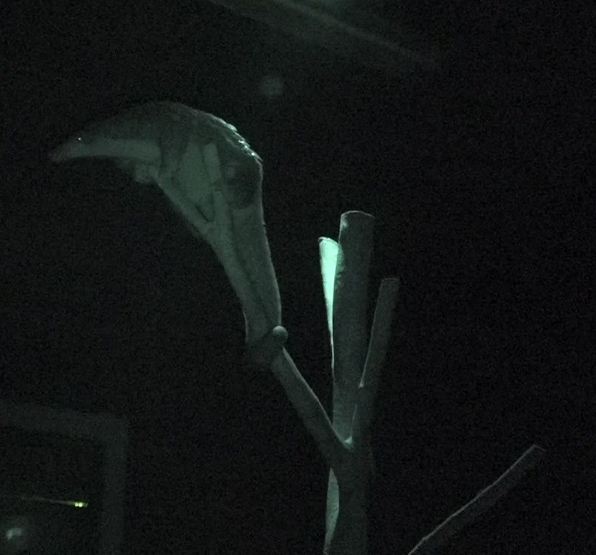The Plight of Pangolins
A few years ago, I was sitting inside a university classroom listening to a professor’s lecture on the endangered species of Southeast Asia. As he talked through the dozens of species that face the threat of extinction, I could have sworn he said that one was, “a critically endangered species of penguin that lived in the forests of Thailand, foraged on ants and termites, and had a prehensile tail”. I took a cautious inventory of the faces of my classmates, hoping that they would be as perplexed as I was. Unfortunately, most were nodding in agreement with the professor and attesting to the urgency of this animal’s conservation. At that point in my life, I had recently left an unrelated profession of eight years, and being new to the study of animal behavior, chalked this up as a humbling lesson of how little I actually knew about wildlife.
Once I returned home, I was eager to feel less naïve about these rare penguins that live in tropical forests and immediately launched an internet-search. I soon realized that indeed, there were no such penguins that fit that description. The animal that my professor was speaking of was the pang-o-lin! — not a pen-gu-in! In that moment, I wasn’t sure whether I should feel more embarrassed that: a) I actually contemplated the existence of tropical penguins or b) that I had never heard of pangolins before!
I share this embarrassing story simply to emphasize one point: Most people have never heard of pangolins.

One of the pangolins finishing a fresh dish of ants.
Individuals such as my professor and classmates, who happen to be particularly well-read in conservation literature, represent a demographic exception of individuals that are attuned to niche conservation topics. Most non-specialists have likely never heard of pangolins. Perhaps evermore surprising is that those individuals that have studied them for years still consider the existing platform of pangolin knowledge to be…elementary.
There are eight species of pangolins worldwide. Four species are endemic to Asia while the other four are endemic to Africa- all species are listed on the IUCN as threatened with extinction. Pangolins are the most heavily-poached mammals on the planet and may disappear from the wild before conservationists learn enough about them to save them.
To understand why this animal is so highly sought in the illegal wildlife trade, however, it is best to first explain what makes the pangolin so unique from a biological perspective.

A great look at Pluto’s scales while he enjoys a meal.
Pangolins are placental mammals, and unlike any other mammals (to our knowledge!), are covered in true, keratinous scales. These scales are both essential to their survival and the driver of their current demise. While the pangolins’ scales are an effective morphological adaption that protects them from their natural predators, they are also highly-valued on the black market for their supposed health benefits within traditional medicine. When a pangolin feels threatened, it curls into a motionless ball and uses its “scaled-armor” to form a largely impenetrable defense. The strategy of the pangolin is to simply remain in this position and wait for frustrated predators to move on. In fact, the pangolin’s defense is so resilient that there are documented instances of lions being rendered incapable of bypassing this protection! However, from the perspective of a poacher, once a pangolin is located and feels threatened, the job is done. Since pangolins remain still until the threat leaves, they are left completely vulnerable to humans who can easily pick them up, place them in a bag, and haul them off to market.
Approximately six months after I learned what pangolins actually were, I had the rare opportunity to see them for the first time on a university-led field course. The course led my classmates and I through Thailand and was intended to demonstrate several aspects of wildlife conservation. I vividly remember our pre-trip briefing, where the professor leading the trip mentioned that we would likely see elephants, clouded leopards, gibbons, and if we were lucky: pangolins. Though I now knew what a pangolin was, I did not quite understand why my classmates were considerably more excited to see them compared to the other animals mentioned.
Once I did see these animals in person, I found my brief encounter with them to be somewhat anti-climactic. I had expected to see a charismatic and captivating creature, though instead, my first impression of these animals was that they were rather boring.
When I returned back to the United States, it was time to begin planning for my master’s thesis project. For years, I had been set on studying the behavioral ecology of coyotes and was eager to get started. Much to my surprise, however, my advisor suggested that I return to Thailand to study the same pangolins that I had seen during our field course! I asked for some time to consider the option, but never had a true intention of committing. To be quite honest, I had not thought much about the pangolins since I left Thailand. Sure, they were intriguing animals, and I did feel very lucky to be among a select few in the world to actually see them, but they were one of the least memorable animals that I encountered on that trip.
After some personal deliberation, I had an improved understanding on why pangolins struck me as unappealing. Though they are mammals, they lack the behaviors and physiologies which are typically associated with most mammals. That’s when it hit me. My perspective on pangolins was being biased by a common psychological tendency—finding value in animals that most-closely resemble humans. In contrast to pangolins; elephants, leopards, gibbons, and coyotes have features that we are more familiar with. Their physiologies and social behaviors can more-easily be described as human-like and this provides us with an opportunity for attachment. Pangolins are scaly, with lack-luster coloration, and live most of their lives in solitude. Though I initially dismissed these animals for being so different, I became increasingly curious of how they evolved so differently from other mammals. The wavering taxonomic history of pangolins is testament to their oddity, having been reclassified several times before scientists eventually put them into their own taxonomic order- completely separate from any other extant mammals! Realizing just how evolutionarily unique these animals were heightened my concern for their impending extinction, eventually tipping the ‘scale’ towards pangolins for my master’s research.
In total, I spent six months studying the semi-arboreal species of Sunda pangolins (Manis javanica) at the Mahidol Livestock and Wildlife hospital in Kanchanaburi, Thailand. The focus of my thesis was to improve scientific understanding of Sunda pangolin foraging behaviors. Since so little is known about pangolins in general, my hope was that improving our knowledge on how they forage could provide insight in the field to better locate and conserve them. Though Sunda pangolins are just one of eight species, with each likely having a unique ecology, it would be difficult to generalize our findings towards all pangolin taxon. However, given that Sunda pangolins are one of the most endangered species of pangolins, we felt that this would be a good place to start.
A week after I arrived at the pangolin facility in Thailand, I still found myself questioning my interest in this species and my commitment to their conservation. For anyone who hasn’t experienced this, it is an alarming feeling to have after having traveled halfway across the world! To make my trepidations worse, I was dealing with a species that is strictly nocturnal. This meant that I was on an “early-graveyard shift” for my research— beginning at approximately 6 PM and finishing around 2 AM. By week two, I felt that I needed to fully immerse myself in the life of a pangolin to give them the opportunity they deserved to be fully appreciated. Desperate, determined, or possibly a mix of both, I decided to pull an old-fashioned college ‘all-nighter’ and watched the pangolins until the 6AM sunrise.
It was from this point that things began to change.
Upon waking, the pangolins would gently unfurl themselves from their ball-shaped sleeping position to visit a small water basin within their enclosure. After taking a drink, they would vigilantly deposit their feces directly into the water to prevent predators from exploiting their bodily odors. To retrieve their food – a dish of dead ants hung in a tree – they transformed from slow terrestrial pedestrians, into graceful arboreal acrobats, meticulously using their prehensile tails to shift up and down branches with confidence. Once satiated, they would spend the rest of the night curiously investigating all pockets of their enclosure with their hyperactive snouts.

Bert the pangolin, using his muscular and dexterous tail to climb.
Not only were these behaviors very different from those that I observed in other animals, but they also connected with me on a personal level. By patiently observing the pangolins that night, I was able to see them in their true form- peaceful, shy, and curious creatures. As an introvert myself, I related to these behaviors and began to feel a connection to these animals which thrived by simply being left to their peaceful faculties. I found it difficult to accept that such an innocuous animal could be treated so harshly by humans and were being pushed towards extinction for unfounded medicinal purposes. While their specialized adaptations are remarkable from an ecological perspective, they provide no defense whatsoever against humans. For this reason, I began to feel a personal obligation to protect these animals. Though I was initially tasked to study these animals for 3 months in Thailand, I eagerly extended my time of study to a total of 6 months. Since then, I have done my best to spread awareness and raise enthusiasm for their conservation, including presenting my work at the 29th International Congress for Conservation Biology.
The pangolin itself is just one of many species whose existence is being compromised by negligent human behaviors. It would be biased and unjustified to say that the preservation of the pangolin should take precedence over elephants, leopards, or gibbons. However, the extinction of the pangolin is not exclusively about the pangolin. With the extinction of the pangolin also comes the disruption and disappearance of the ecosystems that they inhabit, alongside any unknown functions these animals provide to such ecosystems. Pangolins are also undeniably unique from an evolutionary perspective. They are the only extant species in their taxonomic order and scientists are still struggling to identify where they belong in the evolutionary history of mammals. In the very least, it would be a shame for these animals to go extinct before we even understand what they truly are!
If we begin to understand more about pangolin behaviors, conservationists can utilize this information to better locate the pangolins and the broader resources they value. Once they can be found, scientists will be better positioned to conserve them and their habitats. Currently, poachers are better at locating pangolins than conservationists. By improving our understanding of their behavior, it’s possible that we can bridge this gap in knowledge and develop action plans that protect both pangolins and their ecosystems. Looking back to the day where I clarified pangolins from penguins, I would have never thought that I would invest any further thought beyond this simple distinction. As my curiosity grew, however, I realized how evolutionarily unique these mammals are and how unfortunate it would be to watch them go extinct due to unfounded beliefs in traditional medicine. Without pursuing my curiosity on that classroom day, however, I would likely have remained entirely ignorant to the plight of the pangolin.
Whether you are a conservationist, scientist, nature-enthusiast, or somebody who simply is mindful of the health and future of our planet, you can be involved. Be curious. And, embrace your curiosity. Reading about an animal, plant, or habitat that you are curious about is the first step in expanding your knowledge. Sharing your curiosity helps to circulate such knowledge. This curiosity is not only what helps to clarify a penguin from a pangolin, but also creates a momentum of awareness which influences new ideas, activism, funding, and change.
